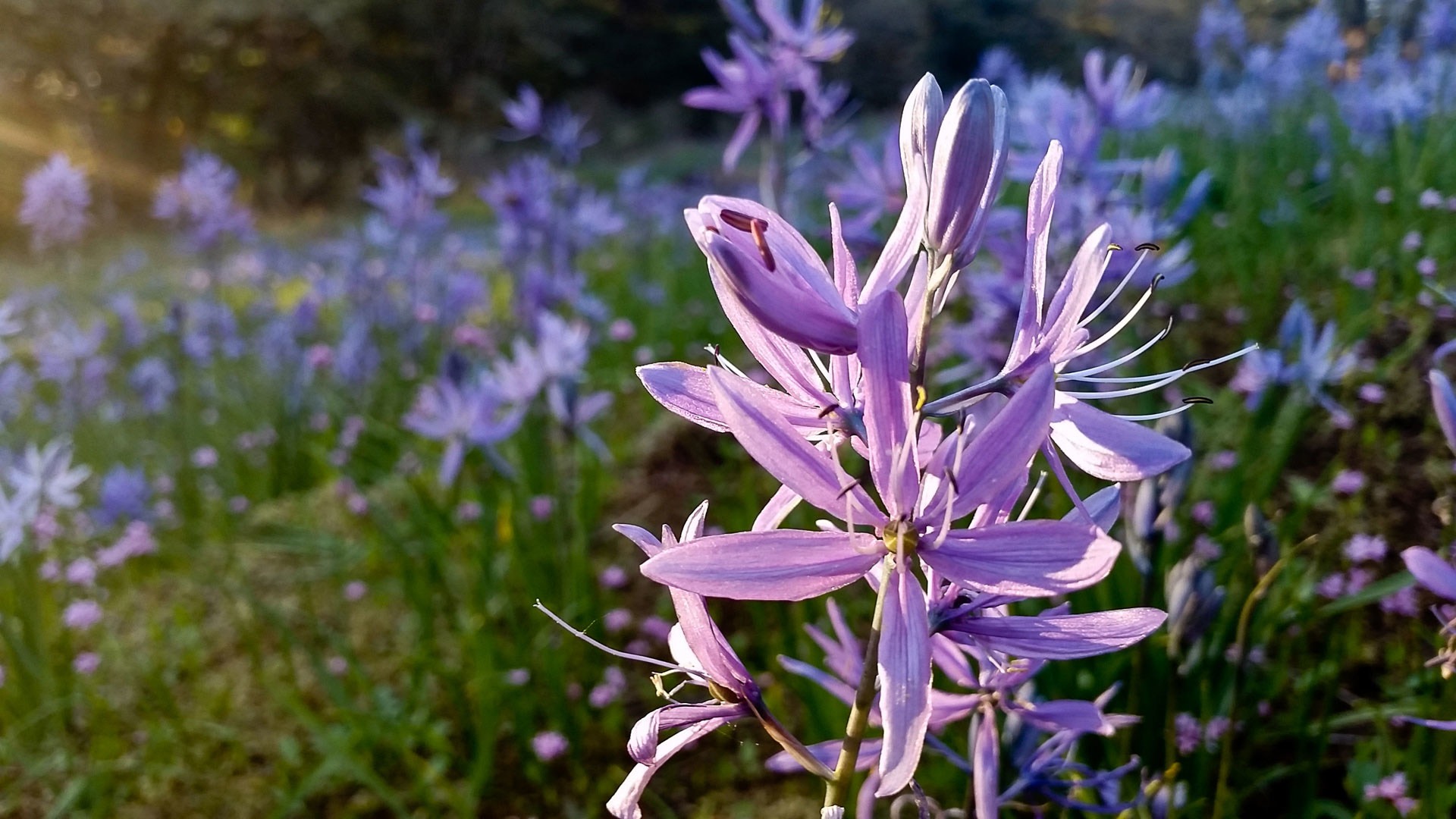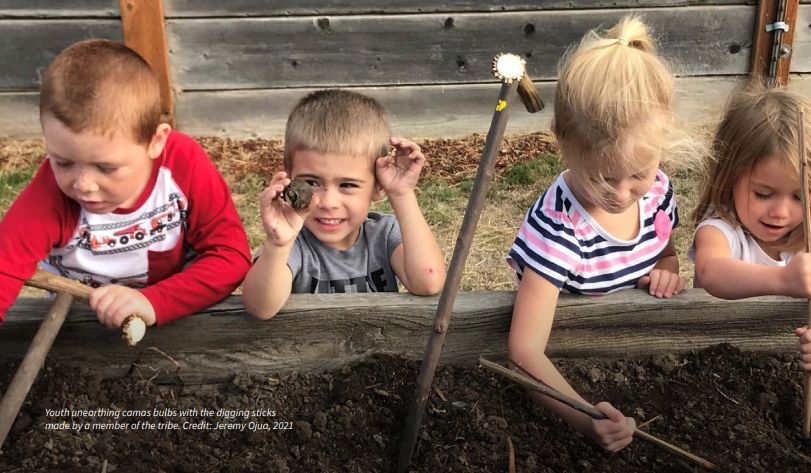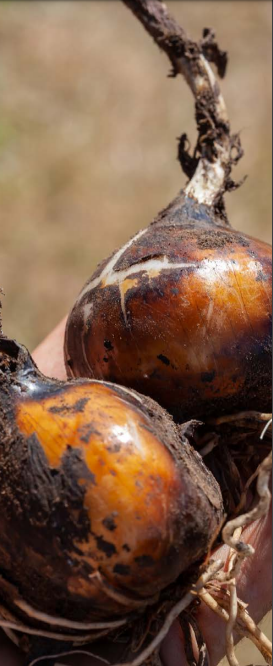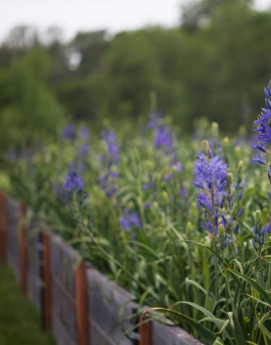How The Confederated Tribes of Grand Ronde Built a Nursery that Supports Land and Community

This article originally appeared in the December 2021 newsletter of Treeline, the regional forest adaptation network. It is reprinted here with permission. You can find the complete newsletter here.
A conversation with Jeremy Ojua, Lindsay McClary and Kayla Seaforth
The Natural Resources Department at the Confederated Tribes of Grand Ronde (CTGR) has been operating the Tribal Native Plant Materials Program since 2014. It started with a vision of producing locally sourced native plants for habitat restoration and cultural education, and was originally funded by an Oregon Watershed Enhancement Board “Plants for the People” grant, which they were awarded in partnership with the Institute for Applied Ecology. These funds allowed the Tribe’s Natural Resource staff to establish two raised beds to grow First Foods plants including great camas (Camassia leichtlinii) and Gardner’s yampah (Perideridia gairdneri).
Since that first growing season, the nursery has expanded to include additional capacity for growing containerized plants used in restoration plantings, a hoophouse to start seeds and cuttings in, and stool beds to provide readily accessible cuttings of willows, red-osier dogwood, pacific nine-bark and other shrub species. Currently the nursery grows around 41 species that support native ecosystems and cultural lifeways.

These additions were made possible by subsequent “Plants for the People” awards, as well as the Environmental Protection Agency’s Section 319 funding program. Through this performance partnership grant, the Confederated Tribes of Grand Ronde has received non-competitive funding to grow their nursery program, which in turn provides plants to reduce nonpoint source pollution to tribal waterways.
Restoration Ecologist and Fish and Wildlife Policy Analyst Lindsay McClary said that the EPA funding has also provided an avenue for greater collaboration between tribes who are interested in creating or growing their own nurseries. She recalls reviewing a nursery startup plan shared by the Saint Regis Mohawk Tribe and offering feedback based on her own experience with the nursery at Grand Ronde. McClary encourages other tribes to pursue this funding if they are interested in starting their own nursery operation, not only as a means of offsetting the costs, but as a way to share information and foster collaboration between tribes.
In addition to supporting restoration efforts and reducing the effects of pollution, which enhances access to clean air and water for everyone, Grand Ronde’s nursery also serves as a point of connection among community members. Nursery Manager Jeremy Ojua said that prior to the Covid-19 pandemic several hundred people visited the nursery each year through tours and work parties. He teaches visitors about the plants that he grows, as well as cultivation and harvest methods. CTGR tribal member Brian Krehbiel made traditional camas digging sticks, which he gifted to the nursery
program; staff and volunteers use these sticks to harvest the bulbs in the fall. Prior to the Covid-19 pandemic, Ojua provided yampah, camas and other first foods to community gatherings such as a welcome home dinner following canoe journeys and other first foods celebrations; he is eager to resume these gatherings once it is safe to do so.


As a way to foster deeper relationships between tribal youth and native food plants, Ojua, and collaborators at the Marion Polk Food Share and CTGR Youth Education and Maintenance and Facilities Departments have installed four new raised beds at the Tribe’s school where children can regularly interact with camas, yampah, wild
strawberries, and more. With guidance from their teachers, the kids learn how these plants are part of the long history of traditional ecological knowledge and contribute to the cultural lifeways of their Tribe.
McClary added that yet another way the nursery is getting more native plants on the landscape is through a partnership with the Polk County Soil and Water Conservation District. The district is offering Natural Resources Conservation Service (NRCS) funding to support oak habitat restoration on private property. Through this partnership, The Confederated Tribes of Grand Ronde will serve as providers of Traditional Ecological Knowledge to landowners who are awarded funding for habitat restoration projects. Landowners will be able to obtain native plants from the Tribal Native Plant Materials Program, and when appropriate, Grand Ronde staff will provide context for the plants and the Traditional Ecological Knowledge associated with them.
The work of the Tribal Native Plant Materials Program provides benefits to the Grand Ronde community that will reach far into the future. Not only will the trees and shrubs grow up to shade waterways that are essential to the survival of so many other species, but the people who have tended these important plants will be connected to all those who did so before them and who will do so after.
To learn more about how to apply for section 319 funding please visit: https://www.epa.gov/sites/default/files/2015-09/documents/319applying-guide-revised.pdf

Leave a Reply